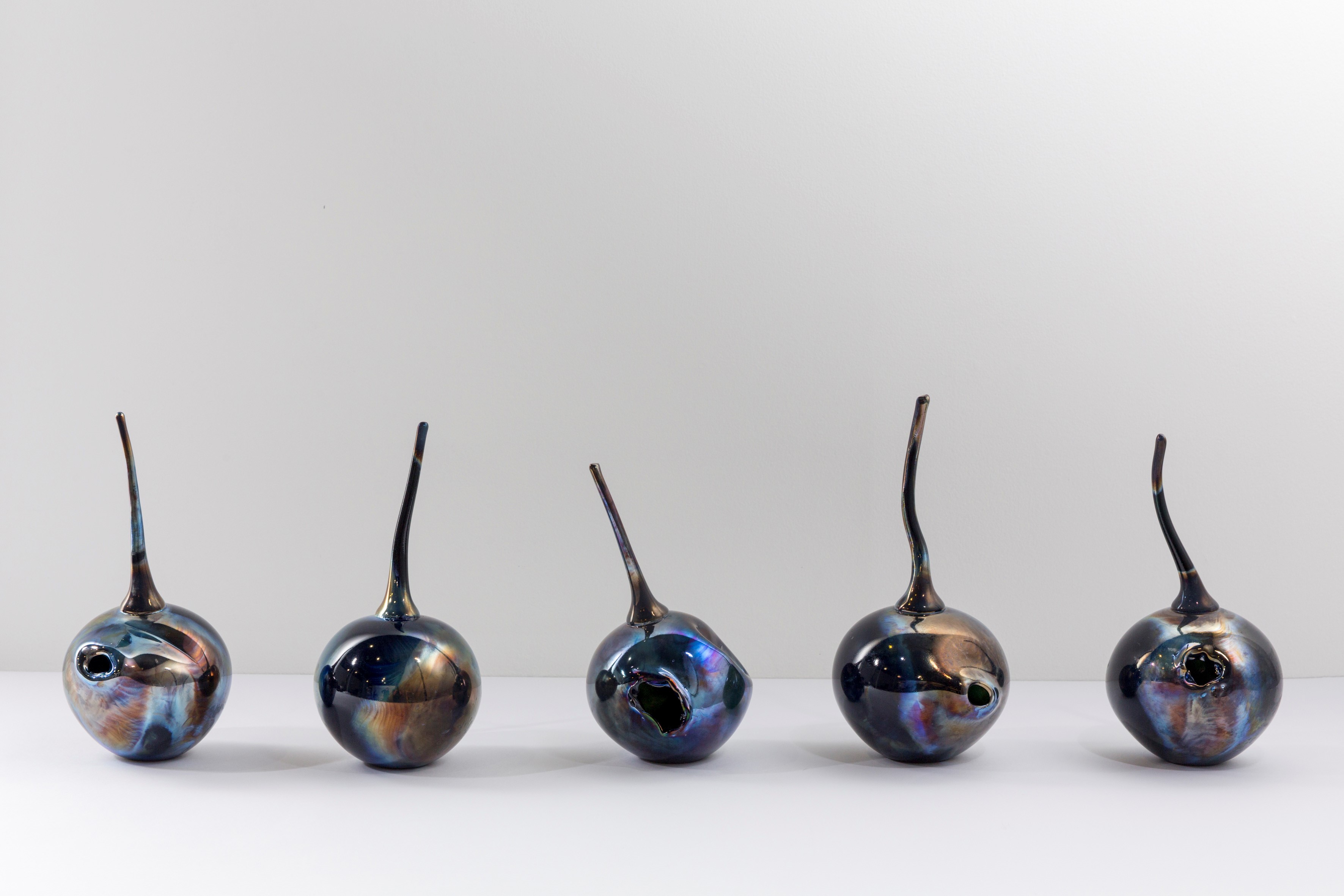
Flinders University Museum of Art is thrilled to present the work of two of Australia’s most acclaimed contemporary Indigenous artists – Judy Watson and Yhonnie Scarce – in a new exhibition organised by TarraWarra Museum of Art and Ikon (Birmingham, UK) with distinguished Arrernte and Kalkadoon curator Hetti Perkins.
Looking Glass: Judy Watson and Yhonnie Scarce will be shown exclusively in South Australia at Flinders University Museum of Art from 27 April to 2 July.
Described as a love song and a lament for Country; a fantastical alchemy of the elemental forces of earth, water, fire and air, Looking Glass is an important and timely exhibition that offers a portrait of the nation through paintings, video and sculptural works that speak to histories, memories and lived experiences of Aboriginal people.
Both personal and painful the exhibition reveals battles which have been fought by Aboriginal people on many fronts from colonial massacres and Stolen Generations through to the British atomic bomb tests at Maralinga and the current climate crisis.
Born in Mundubbera, Queensland, Judy Watson derives inspiration from her matrilineal Waanyi heritage, responding to site and memory in works that reveal hidden truths and explore the emotional and physical topography of particular places and moments in time. In a practice that is grounded in drawing and printmaking and often accesses archival material to build and unveil confronting narratives, her works are politically charged yet contemplative and alluring.
“Art as a vehicle for invention and social change can be many things, it can be soft, hard, in-your-face confrontational, or subtle and discreet. I try and choose the latter approach for much of my work, a seductive beautiful exterior with a strong message like a deadly poison dart that insinuates itself into the consciousness of the viewer without them being aware of the package until it implodes and leaks its contents,” she said.
A number of Watson’s works in the exhibition were made in response to visits she undertook to see English, Scottish and Irish sites of prehistorical significance—including standing stones, circles and hill figures at Stonehenge, Avebury, the Outer Hebrides and Orkney—as well as visits to The British Museum and The Museum of Archaeology and Anthropology at the University of Cambridge.
As stated by the artist: “my idea was to have images of standing stone forms—shadowy or very ghostly presences—and the floating of Aboriginal cultural material across the top. It’s a layering of experiences and a layering of understanding of what is culture”.
Like Watson Scarce recalls the past in and through her work to uncover histories of Aboriginal people that have been suppressed. Born in Woomera, South Australia, and belonging to the Kokatha and Nukunu peoples, she works predominantly in glass exploring the political and aesthetic qualities of the material—notably the corresponding crystallisation of desert sand as a result of British nuclear tests in Maralinga, South Australia, that took place 1956-63. The shocking disregard for the safety of local Aboriginal people at the time was symptomatic of the pervasive racism that has characterised much of Australian history since European settlement.
As part of her ongoing research for the exhibition Scarce undertook research in Birmingham, a city with a significant history as a centre for glass manufacturing. This included work at the University of Birmingham where scientific calculations that led to the development of the atom bomb were made during World War II—a weapon which went on to be tested at multiple sites.
In the words of Perkins: “The seductive beauty of Watson’s and Scarce’s works belies their powerful message about the sustained campaign of the destruction of Country, culture and community in Aboriginal Australia—their work is a kind of ‘tender trap’. With the devastating evidence of climate change in Australia, manifest in apocalyptic wildfires and storms, this exhibition delivers an urgent message.”
Flinders University Museum of Art Director Fiona Salmon says “We are honoured to share the powerful and provocative work of two formidable Indigenous Australian artists and welcome the opportunity to engage audiences in their themes and issues at a time when listening and learning about Aboriginal Australia is as pressing as ever”.
TarraWarra Museum of Art, NETS Victoria, the artists and the curator of Looking Glass respectfully acknowledge and celebrate the continuing culture and custodianship of the Aboriginal and Torres Strait Islanders peoples on whose lands this exhibition is presented and all communities across Australia.

